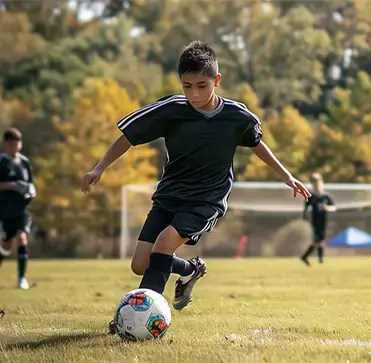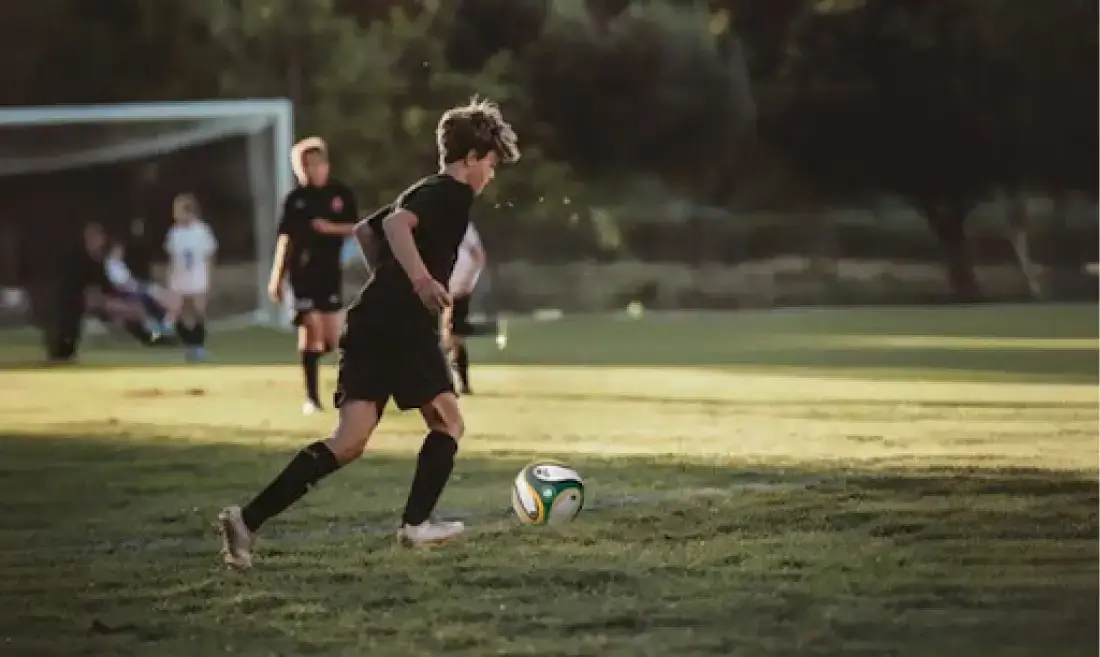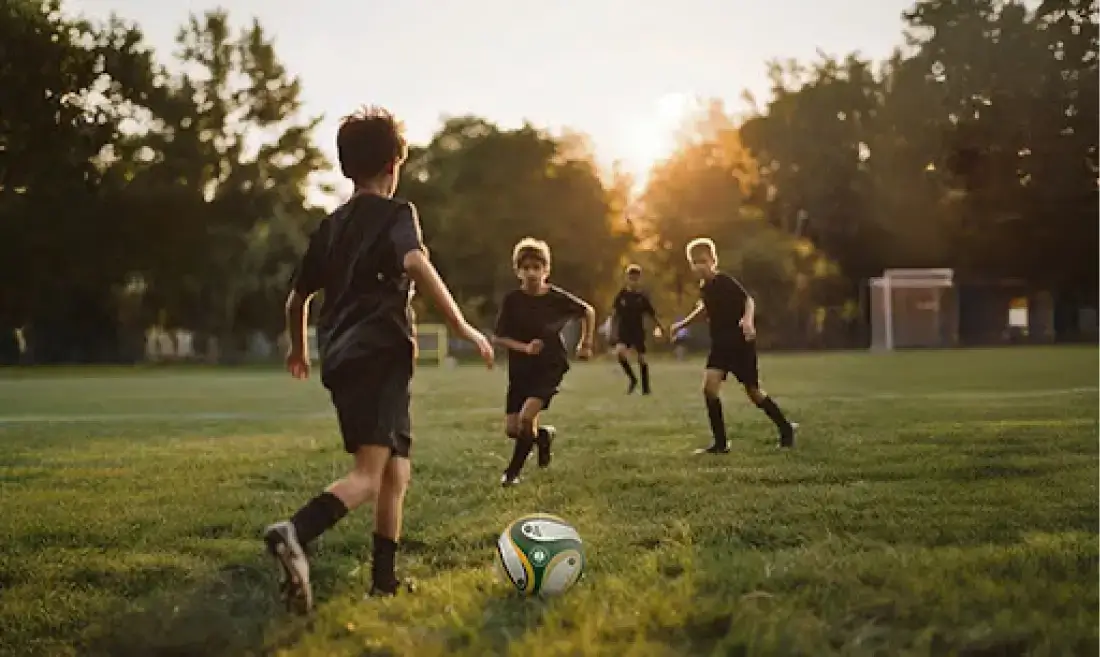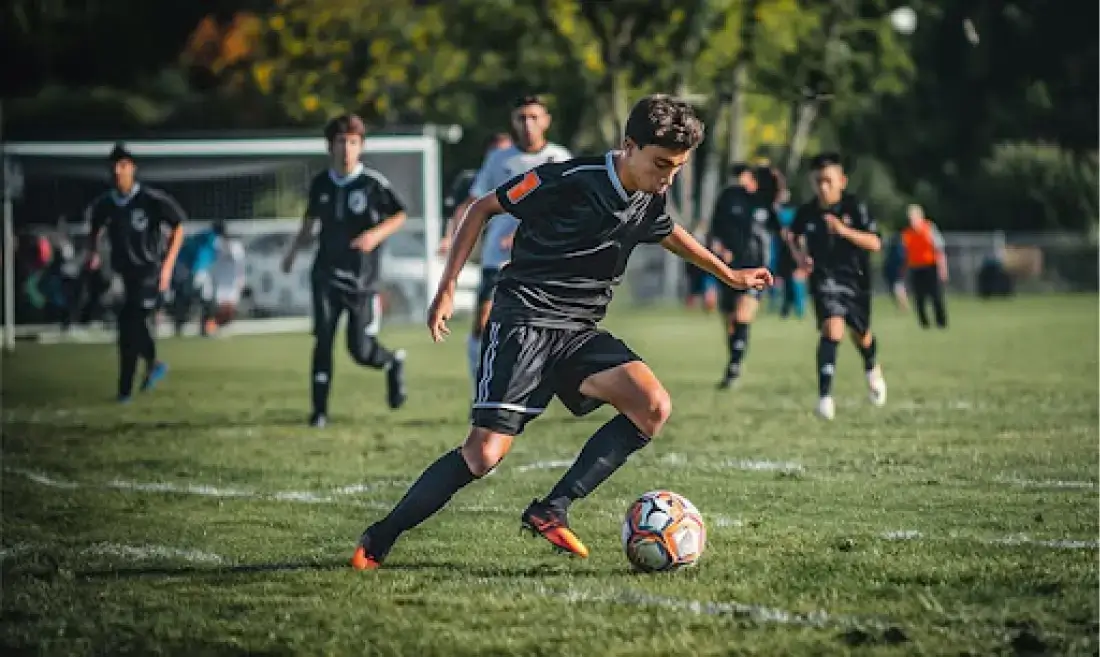Mastering Youth Soccer Tactics: Short vs Long Ball Positioning Strategies

CRFC BLOGS
LATEST BLOGS & NEWSLETTERS
Mastering Soccer Tactics: Short vs Long Ball Positioning Strategies
As a professional soccer coach, understanding and teaching youth soccer tactics is essential, especially when working with young, advanced players. At Rise FC, we prioritize educating our players and their parents about the importance of proper positioning and tactical awareness, particularly in scenarios like playing short from the back on goal kicks or positioning for long ball goal kicks.
Playing Short from the Back: Overloading for Success
In youth soccer, a common observation is the lack of proper positioning when attempting to play short from the back. At Rise FC, we adopt a strategic approach by heavily overloading the side of the field we are building from. This tactic is grounded in the observation that, contrary to common practice, the ball played from a goal kick on one side (e.g., right) seldom switches across the front of the goal to the other side. Instead, it tends to progress on the same side it started. By overloading the side we’re developing the play from, we not only create more passing options but also ensure better defensive coverage in case of turnover. As we progress to the far side, the left winger will drop deep and be a switch option. We will and do encourage middle-of-the-field play. As our teams learn, many throw-ins and short plays will be right in the middle of the field. So parents should stop yelling “Don’t kick it in the middle”. The field is only so big in these youth soccer games. The middle carries some risk but a much higher reward.
For instance, when the goalkeeper plays the ball to a defender, we position another defender almost on the end line, merely 7 or 8 yards away, deeper than the original kick, to create an easy support outlet. Furthermore, our outside wing players are instructed to position themselves far down the line and wide with an open body, about 3 to 4 yards in front of the corner flag. The open body is the key to the whole expectation. The player must get down far enough to make a great easy passing angle. The player must be open and facing downfield. By doing this the wide player can see space or pressure in front of themselves. This creates space to make control easier. The kids and parents want to get the attaching goal as fast as possible but in this case, the fastest way is getting farther from the attacking goal. This concept of further away is the main concept of youth soccer tactical training.

At times going backwards or further away is the best and fastest path forward. This is typically untrue in football and basketball. The concept is different and must be taught. Players must see, feel, and experience this benefit. The faster players see this, the faster our team improves. Also by getting deep and wide, this stretches the opposition and opens up space. A midfielder shows at the top of the box, while a forward moves into space, ensuring the player with the ball has multiple options for progression.
This contrasts sharply with the typical scenario where players are spread thin across the field, resulting in a lack of connectivity due to improper positioning and inadequate player numbers in key areas. Our approach to youth soccer positions, although it may involve risks of losing the ball, aims for long-term success by fostering a better understanding of space and player movement. Overloads are the key. Deep and wide facing forward are the key.
Approaching Long Balls: Positioning for Possession
When playing long balls, defenders must have a strong understanding of the distance the goalkeeper or a defender can kick the ball. The objective is to position high and central. Wide defenders move to the center of the field at the level anticipated the ball will travel. Defenders are expected to be in a position to contest the ball effectively with the midfielders and forwards. Think of a game of 500 or a jackpot. We will be a tight clump of players fighting as a group to secure the ball. This proactive stance contrasts with the common error of remaining deep and wide, which often results in losing possession on long goal kicks.

In such scenarios, our players are trained to advance up the field and converge towards the middle to vie for the ball. Upon gaining possession, the team then spreads out to create space and facilitate play progression. This tactical adjustment is essential for cultivating an aggressive and possession-oriented mindset among young players.
Tactical Flexibility and Decision-Making
At Rise FC, we emphasize the importance of understanding when to opt for a short play from the back or when to go long, based on the game’s context. It’s about making informed decisions that, while not always perfect, are executed with a clear understanding and intent. Our training and match strategies are designed to foster this tactical flexibility, encouraging players to adapt and make decisions that align with our overarching game plan. The players will learn when to implement the proper tactics over time. What we won’t do is sit deep and wide on long balls or high and narrow when playing short.
Learn all such essential youth soccer tactics in our private soccer training program.

Conclusion
In youth soccer, teaching proper positioning and tactical awareness is as crucial as developing technical skills. At Rise FC, our approach to overloading one side of the pitch when playing short from the back, and our strategic positioning for long balls, are central to our philosophy. These tactics not only prepare our young players for immediate challenges but also lay the groundwork for their long-term development in soccer. By fostering an environment that prioritizes strategic understanding and decision-making, we aim to cultivate players who are not only technically proficient but also tactically astute.
FAQs
What are the benefits of playing short from the back in youth soccer?
Playing short from the back fosters possession, methodical play development, and better defensive coverage in case of turnover. It teaches young players the importance of space and strategic positioning.
What is the difference between tactics and strategy in soccer?
Tactics: Actions taken to achieve that goal. Strategy: Difficult to change once it’s set in motion. Tactics: Easy to adjust depending on changing circumstances. Strategy defines tactics and not the other way around.
What is tactical flexibility in soccer, and why is it important for young players?
Tactical flexibility enables young players to adapt their play based on the game’s context, fostering decision-making that aligns with the team’s strategic game plan.
How can overloading one side of the pitch improve a youth soccer team's performance?
Overloading one side creates more passing options and stretches the opposition, facilitating easier ball progression and improving team performance by opening up space.
What are effective training exercises for teaching spatial awareness and player movement in soccer?
Drills focusing on overloading one side, maintaining an open body position, and positioning for long balls can improve spatial awareness and teach strategic player movement.

Did you find this useful?


